A solar inverter is the brains and brawn of a solar power system. Discover what you should know about choosing one in 2025.
While selecting the right solar panels is important, choosing the right inverter is even more so. Skimp on your choice and you could be kicking yourself down the track.
An Inverter’s Role
A solar inverter takes the high Direct Current (DC) voltage from your solar panels — which can be up to 1,000 Volts (V) — and turns it into 230 V Alternating Current (AC), suitable for use by home appliances and for export to the grid.
Through installer-configured settings and inbuilt smarts, this device also ensures local electricity network rules are observed regarding how much power you export to the grid at any given time; and stops exports if the grid is throwing a wobbly — for example during a blackout.
Increasingly, solar inverters are also having to contend with communicating with various other devices such as hot water systems, home batteries and electric vehicle chargers; minimising their expensive mains grid electricity consumption by taking full advantage of surplus self-generated solar energy.
It has to do all this as efficiently as possible; finding the best combination of voltage and current to extract the maximum power from the panels on a second-by second basis — day-in, day-out in all sorts of conditions for what should be many years. Good inverters should last 10-20 years, but don’t expect a cheap one to make it past 10.
5 Types Of Residential Inverters
- String: the most common type in use for residential installations. Around the size of a briefcase, these are installed on a wall.
- Micro: as the name suggests; much smaller and about the size of a paperback book. Rather than hanging off a wall, microinverters are installed under the panels; usually one for each panel.
- Optimised string: pairs a single large solar inverter with small devices associated with each panel to optimise performance.
- Hybrid: used instead of a string inverter to allow you to easily add batteries later.
- Modular hybrid: a new type of inverter used in some modular home energy storage systems. The inverter module can be purchased first and battery and other modules (e.g. EV charger) stacked directly underneath it at a later date.
In the video above, SolarQuotes founder Finn Peacock offers more detail on the use cases for each of the above, or you can read more in our solar inverter guide; but summarising:
- If you are only getting solar panels installed, a good string inverter is the go.
- If you are buying a home battery in the next couple of years; consider a hybrid inverter to make battery installation cheaper — but this may also lock you into certain batteries.
- If you have really complicated roof or want your system to run at safer voltages, consider microinverters that optimise each panel individually.
Choosing Solar Inverters
There are more solar inverter brands available in Australia than you can poke a stick at. That’s unless you’re capable of poking a stick at more than 114 of them; which is around the number of brands with models currently approved for use in Australia by the Clean Energy Council (CEC). Added to those are the units available on the Australian market that aren’t.
CEC approval is a must if you wish to claim Australia’s solar panel rebate, the upcoming federal battery rebate and some state incentives, and if you want to connect the solar inverter to the mains grid.
Generally, brands can be placed into one of four pricing categories.
- Budget: e.g. GoodWe, Solis
- Mid-range: e.g. Sungrow, Sigenergy
- Premium: e.g. Fronius, SMA
- Top-end: e.g. SolarEdge, Enphase
The brand examples provided are currently recommended by SolarQuotes.
Decent 10-kilowatt (kW) budget-end solar inverters can cost as little as $1,500, while at the premium end you’re looking at approximately $3,600 – $4,000 — so there is quite a difference. And top-end systems cost even more (~$5,500).
The quality of brands within each category varies, particularly at the budget-end of the pricing spectrum. And even within CEC-approved devices in the same pricing category, not all are equal. Hardware and software quality aside, one of the attributes that sets brands apart is an Australian office. When something goes wrong, you want someone local for your installer to deal with to get it fixed.
On a related note, solar inverter warranties usually run from 5 to 15 years, and some brands allow you to extend the warranty for an extra fee. But warranty length isn’t necessarily an indicator of quality either. Plenty of manufacturers offering long warranties have disappeared over the years, leaving Australian customers high and dry. It’s also important to check the fine-print of warranties for ridiculous terms and conditions; such as having to send an inverter back to China for repairs.
Choosing an inverter can be time-consuming, but if you’d like a short-cut for whittling down to a list of good-quality contenders that are well-supported in Australia, see the solar inverter brands recommended by SolarQuotes in each category.
Given how hard a solar inverter works, Finn’s advice is to buy a recommended mid-range-to-premium brand rather than a budget model — and only use microinverters if you really need the benefits they can provide.
About ‘Oversizing’
In a solar system, the panel capacity is often more than the inverter capacity. For example, it’s common to pair 13.3 kW of panels with a 10 kW inverter. This ‘oversizing’ is a permitted and recommended practice. Among the benefits:
- Provides more power in the mornings, afternoons and when the sun’s not super strong.
- This also gives you more solar rebate, as the subsidy is based on panel capacity, not inverter capacity.
Without batteries, you can oversize by 33%. If you have batteries and assuming the manufacturer allows it, a regulatory loophole allows you to use double the amount of panel capacity than the inverter’s output power.
Inverter Monitoring
Most inverters have lights on the casing that tell you their operational status, and some will have a screen providing further details. Almost all also offer an app these days for more detailed information.
While a standard app can tell you how much power you’ve generated on the current day or historically and what you’re generating right now, the good ones will also tell you how much grid electricity and how much solar your home is using.
But if you buy an el-cheapo solar inverter you likely won’t get that last function; so you’ll be in the dark as to how much solar electricity is being used by your home — which is kind of useless. You need this feature.
Installation: Location, Location, Location
On a closing note; heat is the enemy of a solar inverter. A good way to kill one before its time is to install the device where it will be exposed to direct sunlight. This can also kill your warranty as some manufacturers require installation in a shaded position.
While a garage is the best place for your inverter, if that’s not an option the next best place is next to your meter box. If that area is unshaded, get a simple shade put over it. Model-specific covers are best if you’re prepared to pay 200-300 dollars.
If the information above has left you wanting more, check out SolarQuotes’ full guide to choosing the best solar inverters.

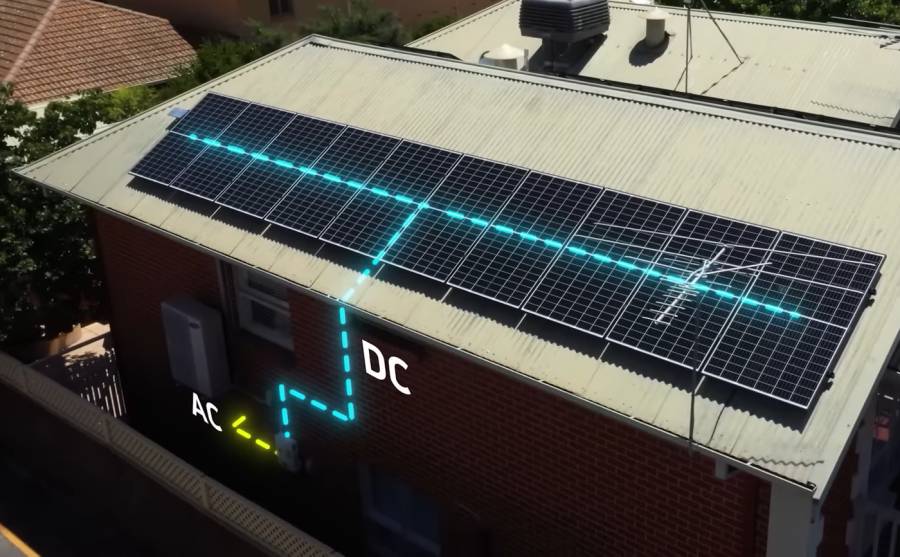
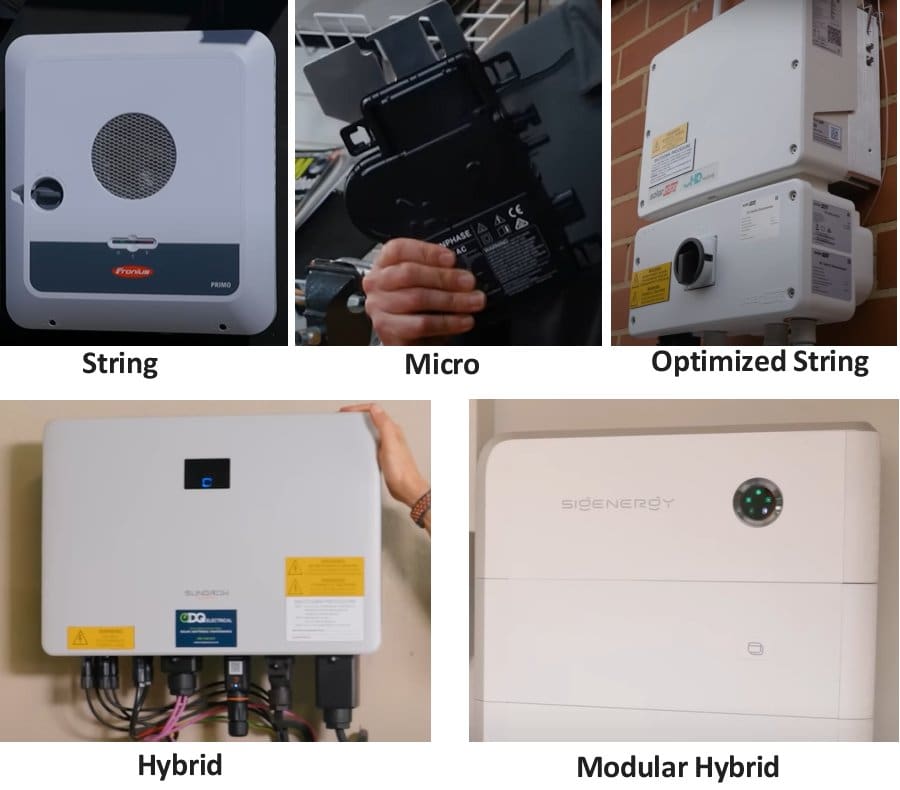
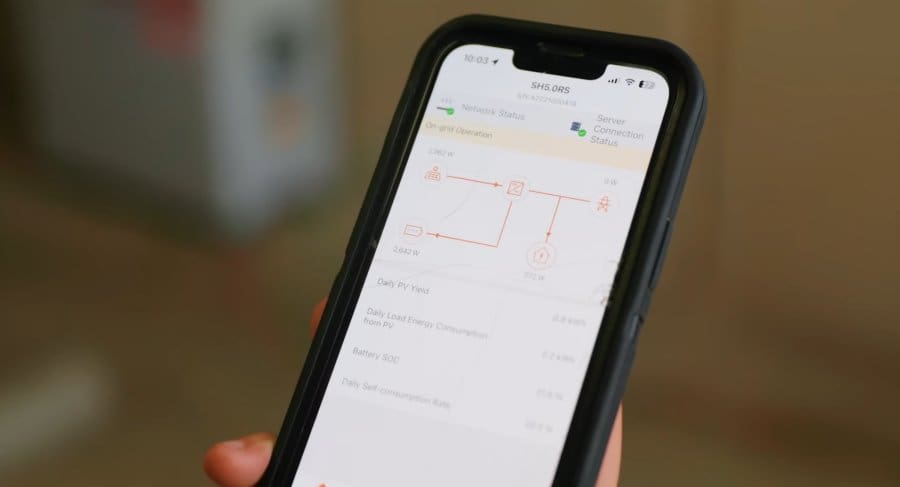
 RSS - Posts
RSS - Posts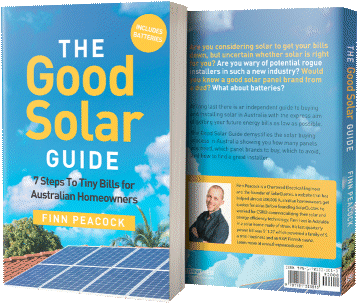


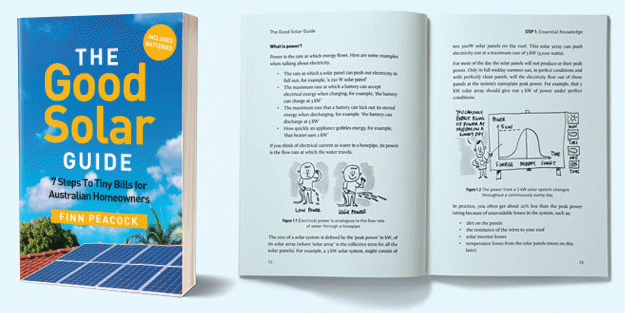
Mchael,
no mention of V2G in your article. I feel it will be important in times to come. If I were installing solar now, it would be a factor I would consider.
Why only use microinverters if absolutely necessary? In our case we went with Enphase microinverters because a large chimney shades part of our northern roof during the day, and we didn’t want that to be a choke point for solar production with a string inverter.
Are they not advised more generally because there are more potential points of failure? And/or because to do anything with them they’re harder to access, being on the roof and under the panels?
Hi Nick,
You’ve got a good handle on it. Enphase are a PITA when they fail, plus rooftop heat isn’t a hospitable environment for electronics.
Enphase are good for complex roofs, small arrays & shade problems. They suffer with AC voltage drop compared to a higher voltage DC string.
Enphase need a perfectly matched panel because the operating voltage window is quite small. Where a string inverter can have 150 – 600v range that allows multiple panel models or string lengths to be used, Enphase requires you get one panel with exact performance and hopefully that also meets the 133% overdrive allowable under STC incentives.
It’s horses for courses but I know some unscrupulous operators have paired a 10 amp rated Enphase IQ7 series with nominal 13.5 amp panels… costing the consumer 3 or 4% over the life of the system just because the installer is too slack to choose the right gear.
Hmm, so we got SunPower Performance 3 panels, which seem to max out just over 10 amps. That seems a match?
The 25-year warranty on the IQ7s seemed assuring, everything working flawlessly 3 years in (touch wood).
Interestingly Enphase obviously have their own app, but the installer said with the Powerwall (which we got as well) we were better off getting our data through there, so they haven’t enabled the full functionality of the Enphase app, just overall consumption and output, and the real-time panel status. Can you only have one or the other (Tesla or Enphase app) with full functionality, at the same time?
Hi Nick,
I’d expect you should have both apps but the Tesla one is much prettier and more intuitive than Enphase, so they’re often preferred. There may be some extra hardware or even a subscription for Enphase functionality, they don’t give much away for free.
10a panels and IQ7 series is fine and dandy
“ the panel capacity is often more than the inverter capacity “
Michael, how does it work when enphase micros IQ 8HC limit a 440W panel to 380W?
I’m looking at getting 22 Winaico 440W (that’s max for my roof space) with a SigStor 16kWh battery (2x8kWh modules). Yes, I know the enphase is ac and the sig a hybrid 6kW single phase inverter but safety (and battery cost/capacity) is the my reason to mix both.
Are the STCs worked on 380 or 440 – i.e. is it an 8.36kW system or 9.68kW?
Will a 8.36kW system fill both batteries in NSW Central West region 2849?
Hi David,
STCs are derived from panel ratings.
Use this link to calculate your average output but I would expect something like 33kWh/day on average, so there will be winter days when you’ll struggle for solar yield at a guess.
Peak rating of micros might cost you a few percent but most of the time the panels aren’t running at peak performance.
For example, I know some unscrupulous operators have in the past paired a 366Watt/10 amp rated Enphase IQ7 series with nominal 440Watt/13.5 amp panels.
Enphase have data to say even though the wattage is within reason, it would be costing the consumer 3 or 4% over the life of the system just because the installer is too slack to choose the right gear with the right current rating.
Thanks Anthony,
Interesting site – I used the roof mapping feature and got 8.8kW and if I inputted the correct numbers the average day (annual/365) was closer to 37 so that’s close. June figures were the lowest at around 25 so as you say less to fill one let alone two batteries.
Is that 3-4% loss over 25yr warranty applicable to my situation?
Also does your answer to Nick mean I should get 380w panels rather than 440w?